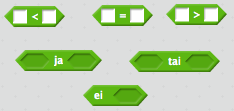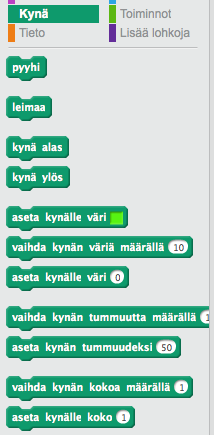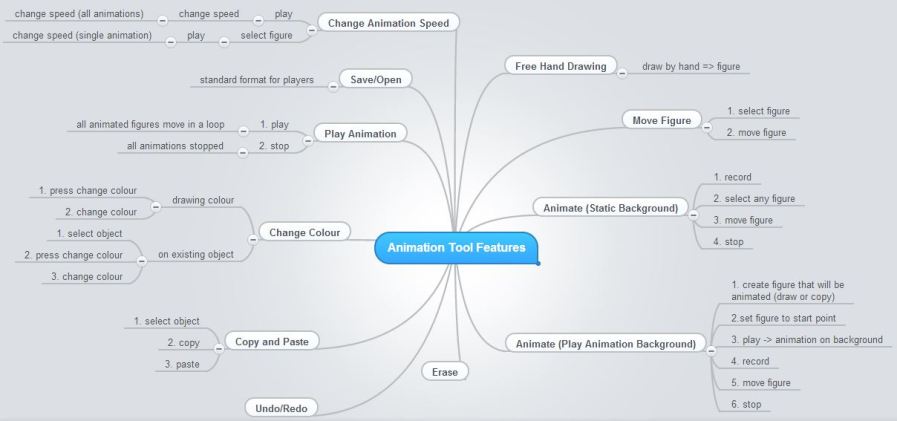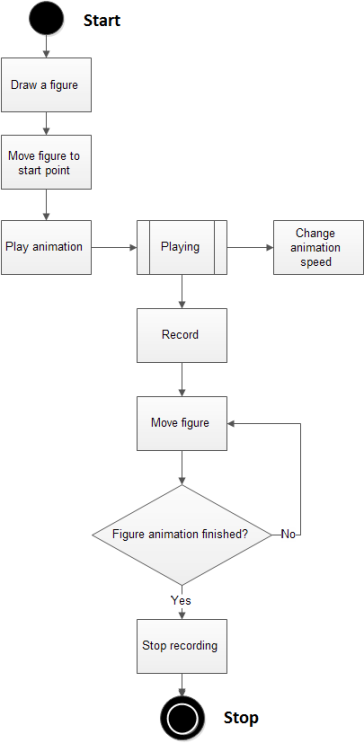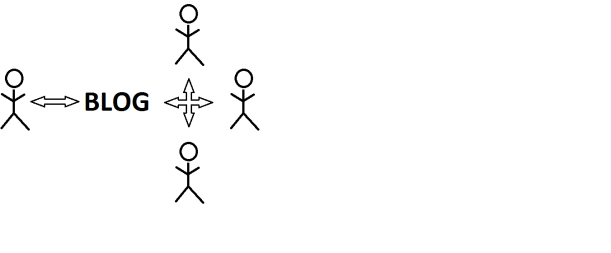What are the most important things you have learned during the second (on-line) part of the theory course?

Our task was to write chapter 5 that had a theme: “Ethical issues in education”. These are the things that come to my mind first as a some kind of main learning:
1. What ethics in education means in overall level?
2. Light analysis of several pedagogical models.
3. Getting familiar with some new ICT tools.
4. Identification of helpful knowledge sources in further studies.
5. Benefit of limited communication level with ICT tools.
6. Control of cognition and affect in the context of self-regulated learning.
1. In the beginning of our task I concentrated to create a kind of a big picture about ethics in education. To do that I did some research in web and I borrowed one book that handled the issue. Based on my research I made a mindmap about my view to ethics in education. It helped me in two ways. Firstly, it helped me to focus on some specific details. In a nutshell I came to conclusion that ethics in education or in any other field is simply about two things: Our values and how do we apply them in practice. As our task was to help a university teacher to teach ethics in education in a “theory through practice” way I think my summary about ethics was well in line with the task despite of possible inaccuracy in my conception. Secondly, mindmap helped me to become aware of several issues that have a correlation to ethics and influence it or are influenced by it. Thinking about ethics made me to notice once again how the things that seem to be familiar from everyday life usually have a complex dependency to many other factors.
Here is my mind map (created by Mindomo):
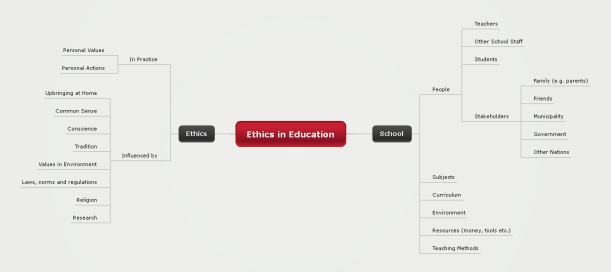
2. Our (people of Oulu University) responsibility was to concentrate on pedagogical models that the teacher in our task’s scenario could use. I had a plan to go through several pedagogical models quite deeply and to analyze them, the result being a logical reasoning for a model(s) our teacher should apply. Because of limited time I had for this project I had to change my plan. I went through a number of pedagogical models only in an overall level. Pedagogical models included some new to me like anchored learning,reciprocal learning and learning through design. In the end when we proposed some models to our teacher we did it mainly on emphasizing model’s practicality and simplicity. That’s why we selected a case based learning as a main pedagogical model as it seemed to be a model that creates collaboration, a single case can be executed during one lecture (1 hour 45 minutes) and it can be based on real-life cases.
Overall analysis included some comparison of different pedagogical models. Following picture is a good snapshot of comparison as it tries to show how models (CBL=case based learning, PBL=problem based learning, IBL=inquiry based learning) differ for example from the effort, skills and teacher guidance viewpoint. Case based learning being the “lightest” pedagogical model among these.

When reading about the models from the web I got an impression that the different writers give a bit different definitions about the same models. For example I think that the inquiry based learning is quite equal to discovery learning and that active learning doesn’t bring much additional value compared to my view about discovery learning. Well, this observation can be at least partly due to use of bad quality sources or even more to my wrong interpretation of them! However, I have at the moment an assumption that the reality in the field of educational sciences (in all sciences?) is that researchers may emphasize a bit different details in same models based on their personal interests and understanding about them. It truly makes a student’s life easier when you define clearly what you are searching from the sources and try to focus only on that! E.g. in our case the goal in the end was to understand the basic definition of several pedagogical models and how they could be applied in university teaching.
3. During this task I used three new tools to me: Doodle, Mindomo and Purot Wiki.
The Doodle was easy to use, but what I most liked in it was that it was easy to see what is it’s purpose. The Doodle is a beneficial tool to identify a point of time and date that is suitable for a group of people to do something together.
Mindomo is a mindmap tool that provides roughly the same features than e.g. Mindmeister tool. As Mindmeister also Mindomo is designed in such a way that it’s easy to start to use it without reading any instructions as long as a user is familiar with the idea of mindmap and applications in general.
The main point in Purot Wiki seems to be that it supports collaboration by offering textual discussion window next to created product (text, pictures, videos etc.). I liked the chat window and I felt that it helped our collaboration. In general I don’t want to say anything too negative about the tool as I haven’t used it too much… I might not know all the good features in it. However, I felt that the usability could have been a bit higher level. For example when I added text to Wiki, and saved the text, Wiki changed the font to something else repeatedly. Also, when I tried to make hypertext links between sub chapters of main chapter I got an impression that available features were limited and quite laborious to use. Based on my current experience with educational tools it seems to me that the collaboration in Purot Wiki could be improved by adding to it a possibility to chat in real time by writing or rather by speaking. Anyway, I think that the tool in general is ok and as it seems to be developed in Oulu area I want to give my applause to developers. Great achievement! It’s not an easy task to try to compete with big companies in the field of software development.
4. One of the educational sciences databases I used in this project is called ERIC. I have actually used it already before. This task made me more convinced that the ERIC stores various beneficial researcher papers that the student can utilize. I want to highlight this experience as the ERIC database seems to be the one that I can benefit in my further studies.
5. One of the most enjoyable moments I faced with this project was at one Friday evening when I was collaborating with the help of Google Docs (used to write a peer review about other group’s chapter) and Skype (used for chatting between people who collaborated) with people in Norway. We had about two hours time to create our review. I was quite tired due to busy week and to be honest not in so good mood 🙂 And now the point: Even though our peer review analysis could have been deeper, we executed it fast only within a couple of hours and I felt that we really did some collaboration. If other people would have seen me, they maybe would have noticed that I am stressed and tired. That possibly could have influenced our collaboration, even by reducing our execution speed. Now, when we could not see and hear each other I felt that we had better possibility to concentrate on the task. That was achieved with the help of educational tools. This experience shows to me that when the number of collaborating people is not too big and when suitable tools have been selected work efficiency can be really good.
6. I was taking several other courses parallel with this project and I made a decision that I shall not put so much effort to this project. With the limited time and energy I tried to pay attention to basics of self-regulated learning. How could I control my cognition and affect such a way that I and my team achieves its goal in this project? From the cognitive perspective we agreed that we will create a simple solution without too extensive scientific analysis and quotations in our texts. We achieved this by using sources that we already had studied in our course. Another way to execute fast was to copy some good pedagogical practices from our educational technology course. Well, this didn’t produce too much new learning from our task theme, but I think it was reasonable taking into account available resources and the priority we gave to this project. I have to admit that it was a bit more hard to control my affect due to this decision and the result (not so profound article). I was quite tired when the end deadline of this project came closer. And I was frustrated as I couldn’t pay more attention to project. The one main learning for me during this project was to have an exercise in tolerating negative feelings and still executing quite reasonable and efficient way.
What did you think about the implementation (writing assignment, wiki, prezi)?
I mentioned already something about the Purot Wiki. In general I think that the tasks in which the students have to do something concrete by applying the theory they have just learnt is a really good way to reach some deeper learning. So, I think this task was laborious, but good one. Maybe the teachers could think about modifying the task in the future so that the students can select, if they execute the task in a team that consist only from people in Oulu university, or if they choose an international team. That could offer a possibility to choose the level of difficulty based on students’ circumstances.
An important part of the implementation were the review comments by teachers and another group. Even though our team didn’t apply the good comments too much, we still read your comments and thought about them!
What are your thoughts about the collaboration in this part?
Well, it seems to me that no one in our team had reserved much time to this project. So, this produced a kind of a challenge for us. How to achieve reasonable results with a bit less effort? On the other hand I think that to only execute this project till the end already required quite much effort, so big thanks to everyone in our team!
I think the collaboration mainly happened during the meetings we held. In the meetings we for example discussed about the our theme and how we would solve it. One of the main achievements of our collaboration was the creation of the structure of our article. I have to admit that during the meetings I sometimes felt that we are losing time as I had on my mind quite clear idea on how we should execute. Well, I guess other people might have had the same feeling as well 🙂 That’s part of collaboration. It takes time to create a common understanding about the subject.
I felt that our team members could freely choose how much time and energy they put to this project. That was one great thing in our collaboration! Another positive thing was that we quite naturally let people to use their expertise. For example we used various tools in this project and the people who knew them best usually prepared the tool for others. That way we saved some time and executed a bit faster.
Another positive thing in our collaboration was that the co-operation between groups in Norway and in Oulu worked well. This became evident to me as some people from both groups always found some time to this project as the deadlines came closer. The highlight of collaboration to me was the moment when we wrote peer review with Norwegian students in Google Docs finishing in the middle of the night. I got an impression that not all the people had even read the whole article. Still everybody who joined the review could give some comments e.g. by focusing to the details that they had the best knowledge based on their background. We also discussed about the article, shared our views about it and tried to form our common understanding what is the essence and good points in it and how it still could be developed.
Negative thing in our collaboration due to limited time we gave to this project was that we were not able connect pedagogical models to educational tools so well. We didn’t either think thoroughly how do the pedagogical models and selected educational tools really enhance learning. This is reflected for example in the quality of scientific reasoning in our text.
I think the amount of individual work done during this project is depended on how much each individual used time to read scientific and other articles and to think about their application.
What advantages and/or challenges did the online collaboration have?
Well, I can’t really name any big challenges that are clearly linked to our online collaboration. Of course sometimes the tools didn’t work properly. For example the internet connection in Skype meetings sometimes wasn’t good enough. Due to this the voice of some people was difficult to hear or we couldn’t use the video feature. Despite of these challenges I think that the modern technology is so well developed that it provides sufficient enabler to execute this kind of project successfully! The clear advantage is that online work gives more freedom and flexibility to co-operation and it saves time and energy for various reasons (e.g. no need to travel).
Maybe the kind of a problem with one-line collaboration in general can be that when participants can’t see each other physically it’s easier for an individual not to take part to project so much. Another challenge can be that it’s not so easy to come to know each others’ personalities in online compared to face to face meetings and that of course can be an obstacle in collaboration.





